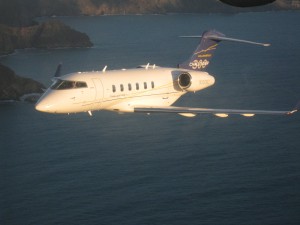Why It’s Okay to Say You Own Your Own Plane
04.28.11 · Ashley Bowen Cook
Whether you own a business aircraft, sell it, build it, maintain it or fly it – you needn’t be apologetic. Corporate aircraft fuel the economy. According to GAMA, they contribute $150 billion annually in the States alone.
Biz jets play a significant, not-to-be-discounted role for heads of state and globe-trotting CEOs who need face-to-face interaction to create partnerships, broker deals and repair relationships. Think of them less like yachts of the air and more like boardrooms with a view.
C-suite types can make a good business case for using corporate aircraft. Take a CEO’s salary and bonus plan, divide those by the hours worked in a year – and you have that individual’s hourly cost or worth to the company. You quickly see how minimizing the time spent in security lines, check-in and navigating multiple connections makes aircraft ownership the more value-oriented travel solution. Ownership increases productivity by providing an office in the air – enabling confidential conversations, phone calls and meetings. Ownership also provides tax benefits that benefit the company’s bottom line.
Forget Stereotypes
The next time you hear someone bashing private aviation, remember these valid justifications. Also, point out that C-suite types make up only a fraction of those who rely on business aircraft to do their job.
Just as small business dominates commerce in the States, so does small business’s use of corporate aircraft dwarf the big guys’. According to an NBAA-commissioned study, 74 percent of flights aren’t carrying C-suite executives. Rather they’re transporting sales, technical and middle-management team members out into the field to do, get this, real work. And, they’re flying them into one of the country’s 5,000 public-use airports – rather than being limited to the 500 that can accommodate commercial airliners. They provide an indispensable link to small and medium-sized communities without commercial service.
Workhorses of the Sky
Uses are as diverse as the aircraft. Rotorcraft taking materials to rigs at sea. Piston-powered prop planes surveying pipelines or mapping wetland losses. Helicopter and fixed-wing water bombers protecting woodlands and homes. Turboprops making short, economical multi-airport hops for engineers and urban planners. Ag planes not just treating millions of acres of cropland, but often also planting by air. Emergency aircraft improving survival rates by getting accident victims to help. Fast.
General aviation advances development and enables small teams to accomplish more. Workforces become not just more mobile, but more nimble. They advance development efforts and shrink our big world. From our base in the Air Capital, we know these truths. But we need to become better proselytizers. Spread the word. If you own your own aircraft, speak up. Proudly.
